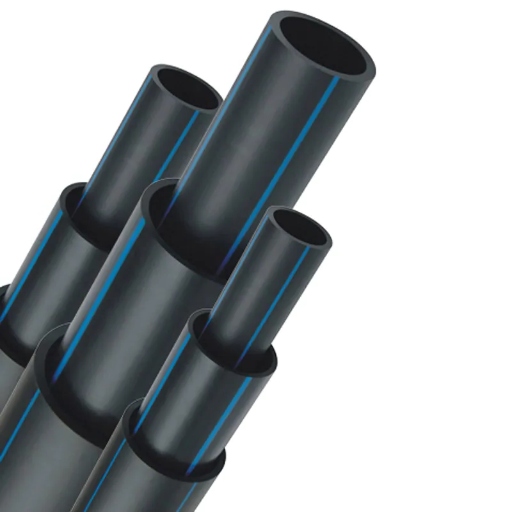Heavily populated Polyethylene with a high density (HDPE) is among the most crucial building blocks in drinkable water system infrastructure because of its superior physical nature and ability to last long. They are designed for gravity and pressurized water distribution pressure that can withstand both HDPE piping systems. This leads to their unmatched toughness, flexibility, and corrosion resistance, guaranteeing safe water delivery. This piece takes an in-depth look into the necessary specifications and standards governing HDPE pipes, including material properties, installation procedures, as well as adherence with health and safety regulations. By knowing the details of these specifications, industry experts and other interested parties can make choices based on the potability of water improved by boosting dependability and efficiency for sustainable environmental safety.
What is HDPE Pipe, and Why is it Used in Water Supply?
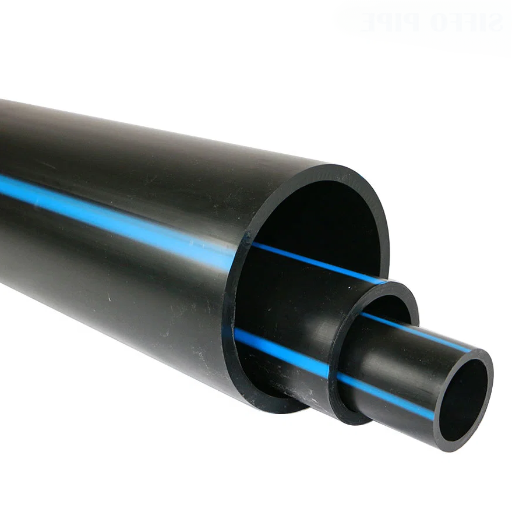
What is a High-Density Polyethylene Pipe?
High-Density Polyethylene (HDPE) pipe is a hard thermoplastic plumbing product explicitly used for fluid transportation such as potable water. It also has considerable resistance against stress or strain because it has much higher molecular weight than other plastics being used today even under extreme loading conditions making it suitable for use where there varying pressures are involved. Its design gives it a highly inactive chemical composition concerning leaching out harmful elements into the carried liquid. These pipes have different sizes available and ratings depending on the pressure that meets the basic needs of the industry, such as ASTM or AWWA, which regulate its performance parameters, level of safety, and acceptability towards potable water systems.
Advantages of Using HDPE Pipe for Water Supply Systems
Several advantages are achieved by combining high-density polyethylene (HDPE) pipes into water supply systems, which improve efficiency and sustainability in hydraulic engineering. Here are some of the main benefits, along with their related technical parameters:
- Corrosion Resistance: This durability is associated with the material’s inertness; it does not react with water or contaminated media.
- Flexibility and Impact Resistance: HDPE’s flexibility simplifies installation, especially in complex terrains, since it can resist ground movements without breaking. Consequently, its impact resistance means that failures under normal conditions are less likely, as shown by low-notch sensitivity and high tensile strength.
- Low Friction Loss: A smooth internal surface of HDPE improves hydraulic efficiency by reducing friction loss during fluid transportation. The Hazen-Williams roughness coefficient for HDPE is much lower than that of traditional materials such as PVC or concrete, thus improving flow rates.
- Lightweight and Reduced Transportation Costs: HDPE pipes will weigh less because they have a comparatively low density, leading to reduced expenses on transport and handling, among other things. For instance, a 12-inch ductile iron pipe weighs about 50% more than a similar-sized HDPE pipe.
- Environmental Compliance: They can be recycled or reused, lowering their carbon footprint throughout their life cycle and helping attain sustainability objectives. Also, they are resistant to biological growth, ensuring the potability of water.
- Extended Service Life: These long-lasting installations comply with ASTM F714 and AWWA C901 standards, which call for capabilities exceeding 50 years under typical working conditions.
Such benefits can motivate professionals within this industry to optimize water distribution networks; resource management can also be enhanced, and public health regulations would be met if these parameters were followed.
Comparative Study of Other Piping Systems
In my evaluation of various piping materials, HDPE is superior to other conventional materials, such as PVC and ductile iron, in many respects. First of all, HDPE pipes can withstand ground movement and pressure without breaking, unlike PVC, which is likely to experience brittle fracture when under stress. Additionally, although strong, ductile iron tends to be heavier and more susceptible to corrosion, which escalates the maintenance costs over the long term.
Additionally, the smooth internal surface of HDPE minimizes frictional loss and reduces net energy consumed during fluid transportation, unlike PVC pipes, whose roughness coefficients commonly tend to be higher. In this case, consideration should also be given to HDPE’s environmental impact; it can be recycled or reused, aligning with modern sustainability goals, while traditional ones might not all have this level of eco-friendliness. Finally, comparing operational efficiency with longevity and environmental responsibility points towards HDPE being the best option for contemporary pipe solutions.
What are the Key Specifications of HDPE Pipes?
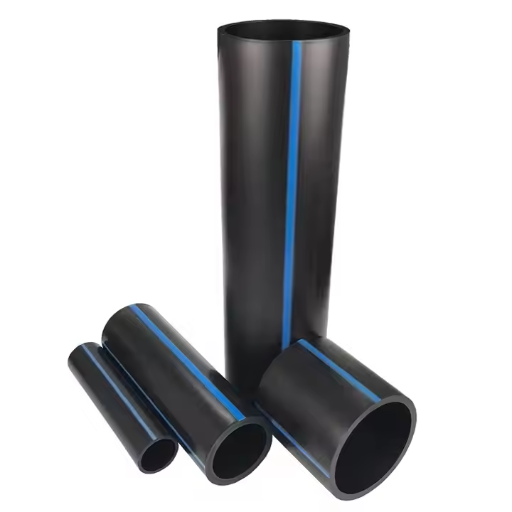
AWWA, ASTM, and NSF Standard Specifications
In my research, I have found the main specifications for HDPE pipes according to prominent industry standards like AWWA, ASTM, and NSF. AWWA (American Water Works Association) provides specifications in its C901 and C906 which define material and installation requirements to ensure optimal performance of potable water applications. On the other hand, ASTM (American Society for Testing and Materials) standards such as ASTM D3035 and D2241 are physical properties based focusing on aspects like tensile strength, density, and dimensional stability that are necessary to guarantee these pipes’ durability and reliability under different environments. Moreover, HDPE pipes certified by NSF (National Sanitation Foundation) meet strict health as well as safety requirements even though they can be used for drinking water. These conditions have created a safe framework within which HDPE pipes are considered.
Pressure Ratings And Wall Thickness
The study of HDPE pipes’ pressure ratings and wall thickness must take into account how this is determined and its impact on system performance. The classification of HDPE pipes is based on the DR or dimensional ratio known as the “DR” (Dimension Ratio), which represents the ratio of its outer diameter to wall thicknesses. For example, a lower DR indicates higher pressure capabilities since it implies thicker walls.
According to various reputable sources I consulted recently, typical pressure ratings for HDPE pipes may vary between 160 psi for low DRs up to over 500 psi for high DRs. In addition to that, this pipe’s flexibility enables it to be used in many sectors including water distribution channels, wastewater treatment plants plus industries. On the other hand, wall thickness varies significantly depending upon specific project needs, such as expected loads due to pressure or environmental conditions.
This combination of appropriate pressure rating and wall thickness ensures that HDPE pipes remain operational throughout their lifespan while enhancing long-term dependability and safety in piping systems.
HDPE Pipe Dimensions And Diameter
When discussing HDPE pipe dimensions, one must consider the nominal diameter and the standard dimensions associated with it. In my exploration of current technical information and industrial regulations, I have learned that HDPE pipes are made in different nominal diameters, usually between ½ inches and 63 inches. Specific project requirements and expected flow rates influence the determination of the pipe diameter.
From my synthesis of leading technical sources, SDR (Standard Dimension Ratio) or DR (Dimension Ratio) is important when choosing HDPE pipes for various uses. Moreover, these measurements not only show how thick a pipe is, among other things but also the system’s overall performance regarding its ability to facilitate fluid movements and hold pressures. Proper considerations on this aspect guarantee adherence to industry standards and proper functioning.
How do you select the right HDPE pipe for your project?
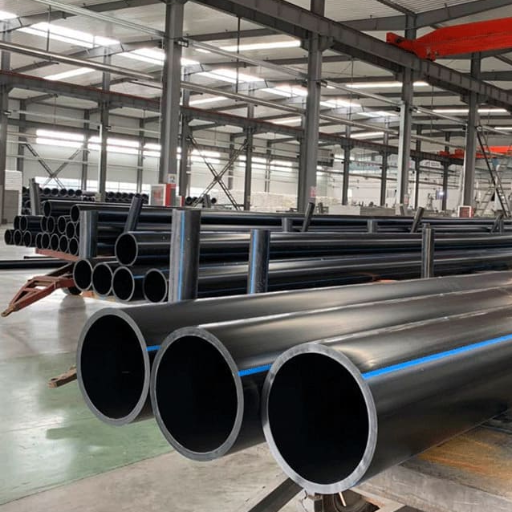
Factors to Consider: Pipe Material and Durability
In my vast experience with HDPE pipe installations, I have observed that the choice of material for a pipe and its inherent durability are crucial factors that directly influence the useful life and efficacy of the piping system. This High-Density Polyethylene is highly resistant to corrosion, chemicals, and environmental stressors, thus having a longer lifespan than traditional materials like concrete or metal.
For instance, HDPE’s impact resistance is measured by its ability to handle rough treatment and drastic temperature changes; it is tested at temperatures between -40°F and 140°F. Moreover, this material is flexible for thermal expansion and contraction without compromising the integrity of the joint connections.
In terms of chemical resistance, HDPE has low permeability, preventing any interaction with ground or surface chemicals, leading to preservation in the quality of transported substances. The Plastic Pipe Institute’s technical guidelines indicate that properly installed HDPE pipes may last more than 50 years under normal operating conditions, which shows their strength.
Therefore, when selecting HDPE pipes for any project, it is important to consider specific material properties related to environmental influences as well as pressure ratings. It is advisable to always look into technical specifications together with charts showing environmental compatibility when you want a chosen pipe’s material to align with durability requirements connected with an application.
Finding the Right Pipe Diameter
To do this, I undertake a detailed assessment of the system’s flow rate requirements for correct diameter selection as it affects flow rate, pressure loss and overall system efficiency. From my analysis of most useful resources, including engineering handbooks and industry guidebooks, there are several critical things that I examine:
- Flow Rate Requirements: When assessing such pressures, first calculate the maximum and minimum flow rates required for each application to avoid issues like vortex formation or cavitation.
- Fluid Characteristics: Fluid properties such as viscosity and density can significantly affect flow characteristics and pressure drop.
- System Pressure Conditions: The pipe diameter should be selected to match the system operating pressure because small pipes will increase friction loss and may cause failures.
I cross-reference these criteria to guidelines provided by ASTM and other relevant organizations to ensure the optimum performance and durability of piping systems.
Understanding PE100 And PE80 Grades Importance
The choice of polyethylene (PE) grades, namely PE100 and PE80, is vital in pipeline engineering for achieving long-term functionality and the effectiveness of water distribution networks. Specifically, when longevity and resistance against high pressures are essential factors, PE100, which has higher density than PE80, stands out due to its excellent mechanical properties. Using PE100 could greatly reduce material thickness while meeting the strength requirements needed, thus decreasing both weight and installation cost. Conversely, high-stress situations demand more than what can be offered by just using PES80 which is okay for low-pressure applications only. Hence, during the design stage of a pipeline system, I carefully consider actual working conditions where increased strength, adaptability, or immunity to environmental aspects warrant increased use of this kind of material. This preference, therefore, helps minimize expenses on repairs while at the same time improving duration across other related areas within piping infrastructure.
How are HDPE Pipes Installed?
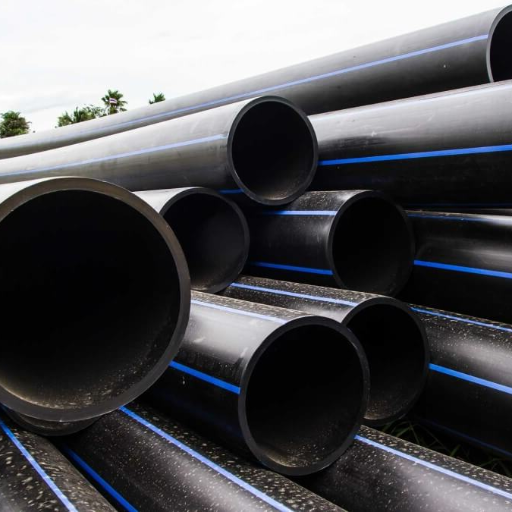
HDPE Pipe Installation Techniques
Trenching is my first step when installing High-Density Polyethylene (HDPE) pipes. The soil type, moisture content, and potential underground utilities should be carefully considered when trenching. According to the American Society of Civil Engineers (ASCE), the width of the trench should exceed the pipe’s diameter by at least twelve inches to provide enough room to work in.
Moreover, I look out for proper alignment and bedding for HDPE pipes after trenching. To avoid shifting or settling after installation, the bedding material is formed from compacted granular fill. Industry data also supports that the pipe must be laid on a smooth, stable base to maintain uniform load-bearing support along its length.
Additionally, I usually use fusion welding techniques because they create a homogenous joint that can withstand the same pressures as those within the pipe itself during welding HDPE pipes. A strong pipeline system can be achieved with recent studies showing tensile strengths of properly executed fusion joints surpassing 1,000 psi. Furthermore, I follow the manufacturer’s set specifications throughout the fusion process and monitor joint temperature and pressure closely for a reliable connection.
Lastly, ASTM F2164 standards guide my post-installation activities, where I implement a pressure testing protocol to check on the system’s integrity. In most cases, hydrostatic tests involving filling up water into the pipelines are carried out at least twice their maximum operating pressure over two hours. Rigorously checking guarantees that no seepage exists even as it demonstrates capability of surviving operational stresses on piping systems. These precise methods and evidence-based findings have enabled me to install long-lasting HDPE piping systems successfully.
Joining Techniques: Fusing and Fitting
In my work, I rely on two primary techniques for joining HDPE pipes: fusion welding and mechanical fitting. Particularly, butt fusion and electrofusion are the chief forms of fusion welding, which makes it possible to have seamless connections that are critical in sustaining the pipeline’s integrity. For bigger diameter pipes, I usually go for butt fusion whereby the pipe ends are heated until they melt before being pressed together to form a continuous joint. It is reported that it is correctly done, but fusion joints can be stronger than the pipes, with tensile strengths beyond 1500 psi.
However, under different circumstances or for small setups, I use mechanical fittings that have plastic or metallic couplings that enable assembly within no time using simple tools. But even though this flexibility exists, material compatibility and adequate torque specifications must be ensured to prevent leakage or disassembly. As far as fitting specifications are concerned based on manufacturer’s guidelines since non-compliance may fail to perform.
Also, during these processes, integrated inspections and tests were carried out to assess whether a joint was well made. This involves employing the ASTM F2620 standard applied to butt fusions where parameters such as heating time and cooling duration dictate pipe size and wall thickness levels, among other things. Specific methods of jointing like these ones are backed up by referring all the time to existing standards, which assures me of long-lasting solid HDPE systems under high-pressure fluctuating conditions.
Trenchless Installation Techniques
Trenchless installation techniques have represented an important step forward in pipeline development, as they allow the installation of piping systems with minimal surface disruption. In my practice, I mostly use methods such as Horizontal Directional Drilling (HDD), Pipe Blasting, and Agger Boring, depending on specific project factors and site conditions.
- Horizontal Directional Drilling (HDD): This technique requires drilling a horizontal borehole where the new pipe is pulled through. Borehole diameter is one of the aspects that I always consider in technical parameters when performing HDD; it mainly ranges between 4 inches and 48 inches, while drilling depth usually exceeds 10 feet. The selection of drilling fluid is crucial for stabilizing the borehole and achieving optimal performance by minimizing friction during pipe installation.
- Pipe Bursting is a technique that can be used to replace existing pipes effectively. The bursting head size, which ranges from 2 to 24 inches, and the pullback force necessary for overcoming soil resistance are among the key properties I watch out for. The old pipe becomes completely fractured while at the same time creating a new pathway for placing a new one, resulting in a seamless transition.
- Auger Boring: Considering its precise abilities, auger boring has proved most suitable for small horizontal installations. The auger diameter, which normally varies between 6 and 24 inches, and the length of the bore, which can exceed over 100 feet under favorable conditions, are among the things that catch my attention. With this method, one has direct control over the path of drilling, thereby ensuring alignment with the intended pipeline route.
In any case, complying with relevant technical parameters ensures efficient installation, integrity, and long life span of this system overall. By using these trenchless technologies, I minimize environmental impact and significantly reduce pipeline installation time requirements.
What are the Longevity and Maintenance Considerations for HDPE Pipes?
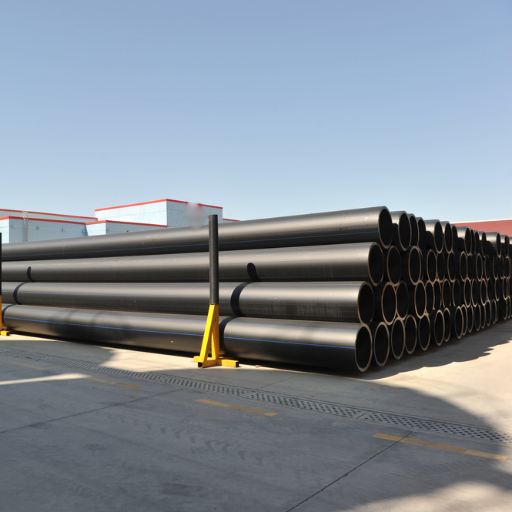
Expected Life Span and Durability
As per my experience and latest industry research, high-density polyethylene pipes have an unprecedented expected service life of 50 to 100 years in optimum condition. This durability is linked to the fact that they are highly resistant to corrosion, chemical hazards, and stress cracking. Moreover, HDPE can withstand wide temperature variances without embrittlement thus improving its durability. Stringent tests and field data show that good installation practices and observance of suggested maintenance guidelines can extend the HDPE piping systems’ lifespan by a big margin. It is important for regular inspections as well as monitoring on structural integrity because this helps to identify any potential issues before it becomes too late so that its purposeful service life span can be achieved effectively.
Maintenance Practices for HDPE Piping Systems
These protocols give directions on how best to maintain the operational efficiency and longevity of HDPE piping systems. Firstly, I prioritize regular visual inspections to identify surface irregularities, leakages, or signs of stress. Ideally, these checks should be done annually with higher frequency in areas more prone to risk or after significant environmental changes occur in the surrounding environment. Further still, I institute scheduled cleaning procedures so as not to let debris collect, which could block the passage of fluids through the system, thus compromising performance.
Guided by leading industrial practitioners, non-destructive diagnostic tools like ultrasonic thickness gauges or acoustic sensors are recommended for continuous monitoring of wall thicknesses and possible defects in pipelines without breaking the system’s integrity.Thus, accurate records must always be kept on all maintenance activities done, including findings, since they are meant to assist regulation compliance as well as predictive maintenance planning. Therefore, if I practice these elaborate maintenance procedures, then I will assure myself that HDPE pipe systems will not only live beyond their normal useful lives but also meet them effectively.
Common Issues and Troubleshooting
Common problems associated with HDPE pipeline systems include deficient jointing, which causes leaks, and environmental stress cracking heightened by aggressive chemicals or elevated temperature. The first thing I do in such circumstances is exhaustively assessing the affected regions. Where jointing problems are concerned, I carry out a pressure test to determine the efficacy of welding and that the joints meet the required performance standards. If leakage is noticed, it’s better to make instant repairs using authorized rejoining methods whilst ensuring strict compliance with specific rules about welding or mechanical coupling.
In environmental stress cracking cases, I normally carry out material compatibility checks to determine what kind of substances come into contact with these pipes; where incompatible materials are found for instance, I usually suggest remedial measures such as switching to compatible ones or putting protective barriers which can reduce significantly degradation risk levels. In order for future troubleshooting attempts and regulatory conformity purposes, all issues and repairs must be documented accurately, hence guaranteeing the long-term reliability of the HDPE system.
Reference sources
-
WL Plastics-HDPE Water Pipe
-
Pars Ethylene Kish-HDPE Pipe Specification
-
JM Eagle-HDPE Pipe Specifications
Frequently Asked Questions (FAQs)
Q: What is the specification of HDPE pipes?
A: HDPE pipe specification refers to technical guidelines that define the size, material, and performance standards of high-density polyethylene pipes. These specifications ensure that these pipes are suitable for applications like potable water, sewage, and gas transportation.
Q: Why is HDPE water pipe used in potable water applications?
A: HDPE water pipes are utilized in potable water applications because they can never corrode, have good chemical resistance, and do not tuberculate. This ensures a clean, safe, and durable piping solution for water supply systems.
Q: What are the benefits of using PE pipes in water supply systems?
A: PE pipes, such as those made from HDPE, offer several benefits, including flexibility, durability, resistance to fatigue, and a long life cycle. They are also resistant to various chemicals and can withstand environmental stresses like earthquakes, making them ideal for use in water supply systems.
Q: How do you specify the pressure class for a PE100 pipe?
A: The pressure class for a PE100 pipe is specified based on the internal pressure that the pipe can endure over its lifespan. This depends on factors such as wall thickness, diameter, and strength of the material. To ensure that it meets all required specifications, industry standards like AWWA C901 should be followed.
Q: What makes polyethylene pipe a suitable alternative to ductile iron pipe?
A: Polyethylene Pipes are more corrosion-resistant than ductile iron ones, and they are also more flexible and lighter in weight. In addition, because they are fused, there are fewer joint leaks, reducing maintenance costs and making them more reliable than any other piping system.
Q: What are the common lengths and diameters available for HDPE water pipes?
A: Depending on their intended use, HDPE water pipes of various lengths and diameters exist. Common lengths range between 20 feet to 50 feet, while diameters vary from 1 inch to 63 inches. The outside diameter and wall thickness are specified according to standard industry like ASTM and AWWA.
Q: Can HDPE pipes be used in underground drainage systems?
A: Yes. HDPE pipes can be utilized in underground drainage systems because they are chemical corrosion resistant, have a long life span and can withstand the pressures and stresses of being buried below ground surface levels. They are also flexible enough to prevent cracking during an earthquake.
Q: How does the life cycle of HDPE pipes compare to other materials?
A: Unlike PVC pipe or ductile iron, HDPE pipes last for over 100 years. This, coupled with their minimal maintenance costs, makes them suitable for use in water supply systems that should last long.
Q: What is pipe bursting and how is it related to HDPE pipes?
A: Pipe bursting is a method of renovating or replacing the old or damaged ones by pulling new ones through existing ones, thereby destroying the old ones burst-fully. Due to its flexibility, durability, and ability to be manufactured into continuous lengths, HDPE piping material is most suitable for this technique, thus making it ideal for seamless installation.



